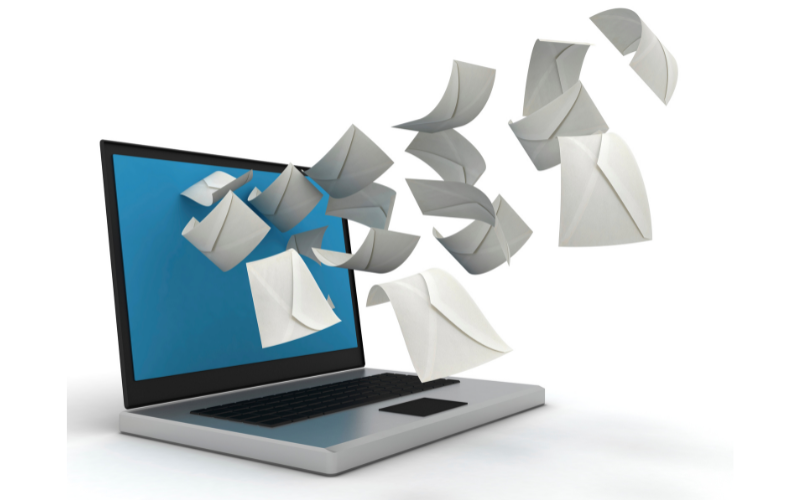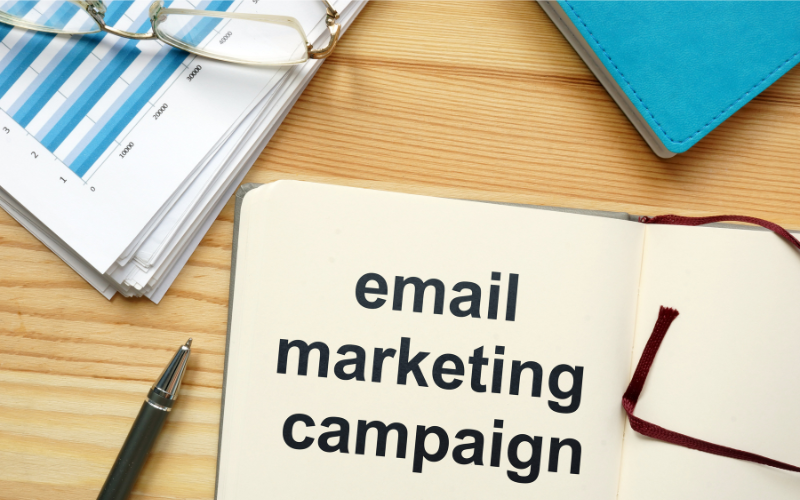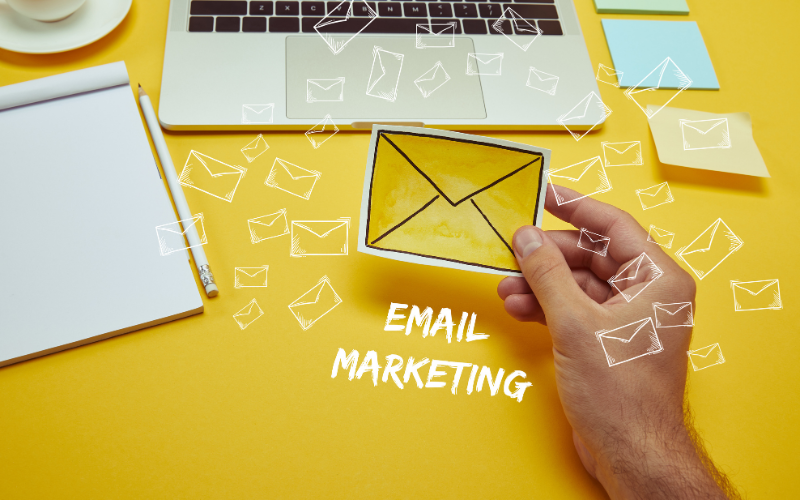Do you want to achieve success in email marketing?
Email marketing remains an essential pillar of digital marketing strategies, offering businesses a direct and potent avenue for engaging with their audience. However, achieving success in email marketing necessitates not only employing effective techniques but also leveraging the right set of tools. In this comprehensive guide, we will delve into the top strategies that drive email marketing success and explore the most valuable email marketing resources at your disposal. If your goal is to achieving success in email marketing read on.
Table of Contents
3 Steps to Cracking the Code to Success in Email Marketing:

1. Understanding Email Marketing
Defining Email Marketing
Email marketing is the practice of strategically sending targeted emails to a curated list of subscribers with the intent of promoting products, services, or nurturing customer relationships. It is a cost-effective, versatile, and highly efficient means of establishing direct communication with your customer base.
Emphasizing the Significance of Email Marketing
- Direct Line of Communication: Email serves as a direct channel, enabling personalized connections with your audience.
- Cost Efficiency: It boasts a cost-effective approach, yielding substantial returns on investment compared to traditional marketing avenues.
- Audience Retention: Email marketing aids in customer retention and prospect nurturing.
- Measurable Results: Robust tracking capabilities, including open rates, click-through rates, and conversion rates, empower marketers with actionable insights.
2. Top Strategies for Achieving Email Marketing Success
To excel in email marketing, it is imperative to deploy a strategic amalgamation of techniques that captivate, engage, and drive conversions among your recipients.
a. Mastering the Art of Subject Lines
Subject lines serve as the initial gateway to your emails. Craft concise, compelling, and contextually relevant subject lines that resonate with the content within the email. Infuse them with action-oriented verbiage, urgency, or curiosity to incite higher open rates.
b. Tailoring Through Personalization and Segmentation
Personalization is the cornerstone of effective email marketing. Segmentation allows you to categorize your email list based on demographic attributes, behavioral patterns, or preferences. This, in turn, empowers you to curate content that speaks directly to each recipient’s interests.
c. Prioritizing Content Excellence
Content reigns supreme, even within the confines of an email. Offer value through informative, engaging, and relevant content. Enhance the visual appeal of your emails through the integration of graphics, videos, and well-structured textual elements.
d. Adapting to Mobile Optimization
Given the prevalence of mobile device usage, ensuring the responsiveness of your emails to various screen sizes is paramount. Implement responsive templates and rigorously test email layouts across multiple devices.
e. Harnessing the Power of A/B Testing
Optimization is an ongoing process. Conduct A/B tests on different facets of your emails, such as subject lines, call-to-action buttons, or imagery, to ascertain the elements that resonate most effectively with your audience.
f. Embracing Email Automation
Streamline your email campaigns and save time by embracing automation. Establish automated workflows for crucial touchpoints like welcome emails, abandoned cart reminders, and follow-ups based on recipient actions.
g. Deciphering Insights with Data Analytics
Monitor and assess the performance of your email marketing initiatives by utilizing analytics tools. Keep a close eye on metrics such as open rates, click-through rates, conversion rates, and subscriber growth. Apply these insights to fine-tune your email marketing strategies.

3. Selecting the Optimal Email Marketing Resources
The choice of email marketing tools can significantly influence the outcome of your campaigns. Consider the following factors when evaluating your options:
- User-Friendliness: Opt for tools that offer an intuitive interface and user-friendly features.
- Automation Capabilities: Ensure that the tool supports automation to streamline your campaigns.
- Segmentation Options: The tool should facilitate effective audience segmentation.
- Template Diversity: Access to a variety of email templates can expedite the content creation process.
- Analytics and Reporting: Robust analytics and reporting features are indispensable for tracking campaign performance.
- Pricing Structure: Align the tool’s pricing with your budgetary constraints.
- Integration Potential: Confirm that the tool integrates seamlessly with your CRM, e-commerce platform, and other vital software.
- Deliverability Reliability: Consistent email delivery rates are pivotal for reaching your audience effectively.
Spotlight on Leading Email Marketing Resources in 2023
1. Unveiling Mailchimp
Mailchimp stands as a popular choice due to its user-friendly interface, robust automation capabilities, and A/B testing functionalities. It also boasts a wide array of templates, facilitating diverse email marketing campaigns.
2. Exploring Constant Contact
Constant Contact offers an easy-to-navigate email marketing toolkit. It encompasses customizable templates, adept list segmentation, and seamless social media integration for holistic campaign management.
3. SendinBlue: The Dynamic Contender
SendinBlue distinguishes itself as a versatile platform that accommodates marketing automation, transactional emails, SMS campaigns, and user-friendly functionality. It caters to both novice and advanced users.
4. HubSpot’s Comprehensive Suite
HubSpot’s email marketing tools are seamlessly integrated within its comprehensive CRM platform. It excels in automation, personalization, and analytics, making it an all-in-one solution for marketers.
5. GetResponse: The Integrated Powerhouse
GetResponse offers a robust suite of marketing tools, including marketing automation, landing page creation, and webinar hosting. It is an excellent choice for businesses seeking a unified approach to marketing.
6. ConvertKit’s Appeal to Creators
ConvertKit caters to creators and bloggers with its automated sequences, subscriber tagging, and customizable opt-in forms. It empowers content creators to engage their audience effectively.
7. AWeber’s Dependability
AWeber is a dependable and cost-effective email marketing tool featuring automation, analytics, and an extensive library of templates, making it a trusted choice for marketers.
8. ActiveCampaign’s Advanced Arsenal
ActiveCampaign shines in the realm of automation and segmentation, making it an ideal choice for businesses looking to harness advanced email marketing capabilities.
9. Campaign Monitor’s Visual Edge
Campaign Monitor offers visually appealing templates, A/B testing, and automation features. It caters to businesses aiming to create visually captivating emails.
10. MailerLite: The Budget-Friendly Solution
MailerLite presents a straightforward and budget-friendly solution for email marketing. It incorporates automation, landing page creation, and responsive templates, making it an attractive choice for cost-conscious marketers.

Conclusion and Final Thoughts
Email marketing’s potential for success hinges on the strategic deployment of techniques and the judicious selection of tools. Craft compelling subject lines, personalize content, and optimize for mobile responsiveness to captivate your audience effectively. Experimentation through A/B testing and the utilization of email automation and data-driven insights will enable continuous campaign enhancement.
When it comes to choosing email marketing tools, meticulously evaluate factors such as usability, automation capabilities, analytics prowess, and seamless integration. The tools highlighted in this guide represent the pinnacle of the industry and offer the potential to elevate your email marketing endeavours.
With the appropriate techniques and resources at your disposal, email marketing success is well within reach.
Success in Email Marketing – FAQs
Q1. What timing is ideal for sending marketing emails?
The optimal timing for sending marketing emails can vary depending on numerous factors, including your target audience and industry. Conduct A/B testing to pinpoint the most effective send times for your specific audience.
Q2. Is it advisable to use multiple email marketing tools for my campaigns?
While it’s technically possible to employ multiple email marketing tools, it’s generally not recommended. Doing so can complicate subscriber list management and analytics tracking. It’s typically more efficient to choose a single, comprehensive tool that aligns with your needs.
Q3. How frequently should I send out marketing emails?
The frequency of your marketing emails should align with your audience’s preferences and the nature of your content. Some businesses send emails on a weekly basis, while others opt for a monthly or bi-weekly schedule. Consistency and relevance are key; avoid overwhelming your subscribers with excessive emails.
Q4. What’s the best way to build a quality email list for my campaigns?
Building a high-quality email list involves a combination of strategies, including creating compelling lead magnets, using opt-in forms on your website, leveraging social media, and ensuring a seamless sign-up process. It’s important to focus on organic growth and avoid purchasing email lists.
Q5. How can I improve my email open rates?
To enhance your email open rates, consider optimizing your subject lines, personalizing your emails, segmenting your audience, sending emails at optimal times, and maintaining a consistent sending schedule. A/B testing can help you refine your approach to achieve higher open rates.
Q6. What are the best practices for reducing email unsubscribe rates?
Reducing email unsubscribe rates involves delivering valuable content, segmenting your list to send relevant emails, providing clear and easy-to-find unsubscribe options, and setting realistic expectations with your subscribers about the frequency and content of your emails.
Q7. What should I do to ensure my emails don’t end up in the spam folder?
To avoid having your emails marked as spam, adhere to best email marketing practices, such as using double opt-in, maintaining a clean and engaged email list, avoiding spammy language, and providing an easy way for recipients to unsubscribe. Additionally, ensure that your email sending infrastructure is properly configured and authenticated.
Q8. How do I measure the success of my email marketing campaigns?
The success of your email marketing campaigns can be measured using key performance indicators (KPIs) such as open rates, click-through rates, conversion rates, bounce rates, and the overall return on investment (ROI). These metrics provide insights into the effectiveness of your campaigns and help you make data-driven decisions for improvement.
Q9. What is the role of segmentation in email marketing, and how can I effectively segment my email list?
Segmentation is crucial for sending targeted and relevant emails. To effectively segment your email list, categorize subscribers based on criteria like demographics, location, purchase history, engagement level, or preferences. Utilize this segmentation to create personalized content and improve the overall email experience for your subscribers.
Q10. How can I maintain a healthy sender reputation and deliverability for my email campaigns?
Maintaining a healthy sender reputation is essential for email deliverability. To achieve this, focus on sending valuable content, reducing spam complaints, monitoring your email list for inactive subscribers, and using email authentication methods like DKIM and SPF. Regularly clean your email list to remove invalid or inactive addresses.
Q11. Can I use emojis in email subject lines, and how can they impact open rates?
Yes, you can use emojis in email subject lines. Emojis can add visual appeal and personality to your subject lines, potentially increasing open rates. However, their effectiveness may vary depending on your target audience, so it’s a good practice to A/B test subject lines with and without emojis to see what resonates best.
Q12. How can I comply with email marketing regulations, such as the CAN-SPAM Act and GDPR?
Compliance with email marketing regulations is crucial. Ensure that your email campaigns include a clear and easy-to-find unsubscribe link, provide a physical mailing address, and respect subscribers’ opt-out requests promptly. For international audiences, adhere to the GDPR if applicable by obtaining explicit consent and safeguarding data privacy.
Q13. What is the role of storytelling in email marketing, and how can it be effectively incorporated?
Storytelling can be a powerful tool in email marketing to engage and connect with your audience. Incorporate storytelling by sharing relevant and relatable narratives that resonate with your brand’s values and the interests of your subscribers. Use storytelling to create a deeper emotional connection with your audience and convey your message more effectively.




